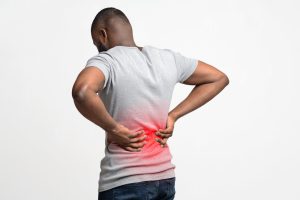Neck pain is one of the top 5 most prevalent disorders in the United States and can be debilitating for those who suffer from it. More importantly, neck dysfunction can be a part of very complex issues related to the rest of the kinetic chain. Symptoms of neck dysfunction often include pain and stiffness, dizziness, headaches and migraines, nerve pain or tingling that radiates down the arms, nausea, and shortness of breath.
The Rundown
The cervical spine consists of 7 vertebrae; C1 and C2 (respectively known as the Atlas and Axis) contain 2 facet joints and the atlanto-odontoid joint whereas C2-C7 contain 2 facet joints and one disc joint per vertebrae summing up to 21 sites where movement occurs and dysfunction can appear. Each of the facet joints is cushioned with articular cartilage and supported by surrounding ligaments and connective tissue as well as the disc joints being supported by the vertebral discs. Each of these vertebral discs are subject to bulges and herniations from compression and shear forces applied to the spinal column. Under traumatic events, the connective tissue surrounding the spinal column can be stretched and elicit neuro-muscular responses that can manifest as the symptoms aforementioned.
Causes of Dysfunction
Circumstances that can trigger neck dysfunction range from minor postural distortions from everyday living to extreme whiplash cases, sprains, strains, and everything in between. A very common scenario in today’s age of desk-work and excessive screen time is forward head posture and rounded shoulders; also known as upper-crossed syndrome (UCS). Upper crossed syndrome is categorized by head positioning which is generally a result of an overactive upper trapezius, levator scapulae, pectoralis muscles, and sternocleidomastoid and subsequently underactive deep neck flexors and middle/lower trapezius muscles. Over time, UCS can cause restricted ranges of motion and shoulder impingement due to the muscular imbalance surrounding the shoulder girdle. UCS can generally be improved through postural correction training and symptoms are relatively minor in comparison to trauma induced neck dysfunction.
Whiplash is another very common source of neck dysfunction and is the result of sudden back and forth motions of the neck that causes strain to the joints within the cervical vertebrae and the surrounding soft tissue via shear force. Sprains and fractures to the vertebrae can happen in conjunction with whiplash during a traumatic event. The most common occurrences are sports injuries and car accidents. Whiplash in particular can be debilitating until the ligaments and connective tissue has a chance to heal which can take several months. Often, muscles will become hypertonic in order to protect the neck from what the nervous system perceives as a potential injury so once the healing process is motion, manual therapy is a great modality to reverse muscular imbalances that can sustain symptoms post-trauma. Symptoms that may arise during the healing process and post-trauma include regular headaches, ringing in the ears, memory impairment, numbness in the arms and hands, shoulder pain, visual impairment, and trouble with sleep. A combination of neck mobility exercises, a well rounded diet, proper sleep/rest, heat and cold therapy, and gentle traction via a neck brace or collar can be beneficial to the healing process by providing the injured tissue with the proper environment to regenerate and remodel.
Neck Function and Strength
Despite the neck being one of the most injury-prone (potentially debilitating) areas in the body, it is often overlooked in strengthening programs. Structural injuries can occur without any of the symptoms aforementioned appearing since the neck musculature is so sophisticated and very good at adapting to injury. A strong and reflexive neck is required to prevent structural injuries from occurring which can be achieved through careful mobility and strength training. The trainer should always perform an assessment before continuing with any neck specific training whether it is direct or indirect. Since muscle contractions in the neck are often reflexive, it is important to develop a dynamic system of neck strengthening that requires external stimuli rather than doing “reps & sets” like you would global movers such as the hamstrings or biceps. Rotational exercises are one of the best ways to incorporate the neck into core and full body workouts and develop a more resilient and athletic neck in turn, protecting your noggin! You can learn pain management with us at our Pain Management Level 1 Seminar.




